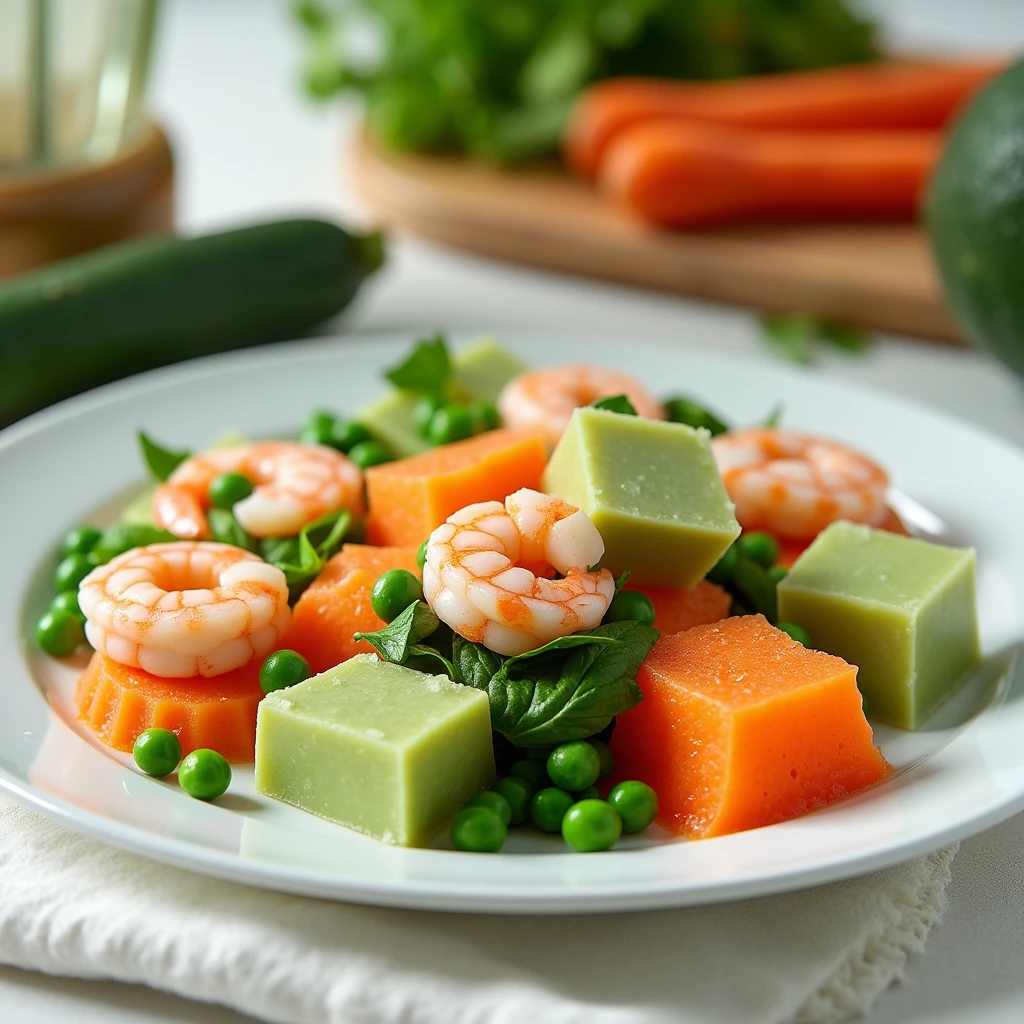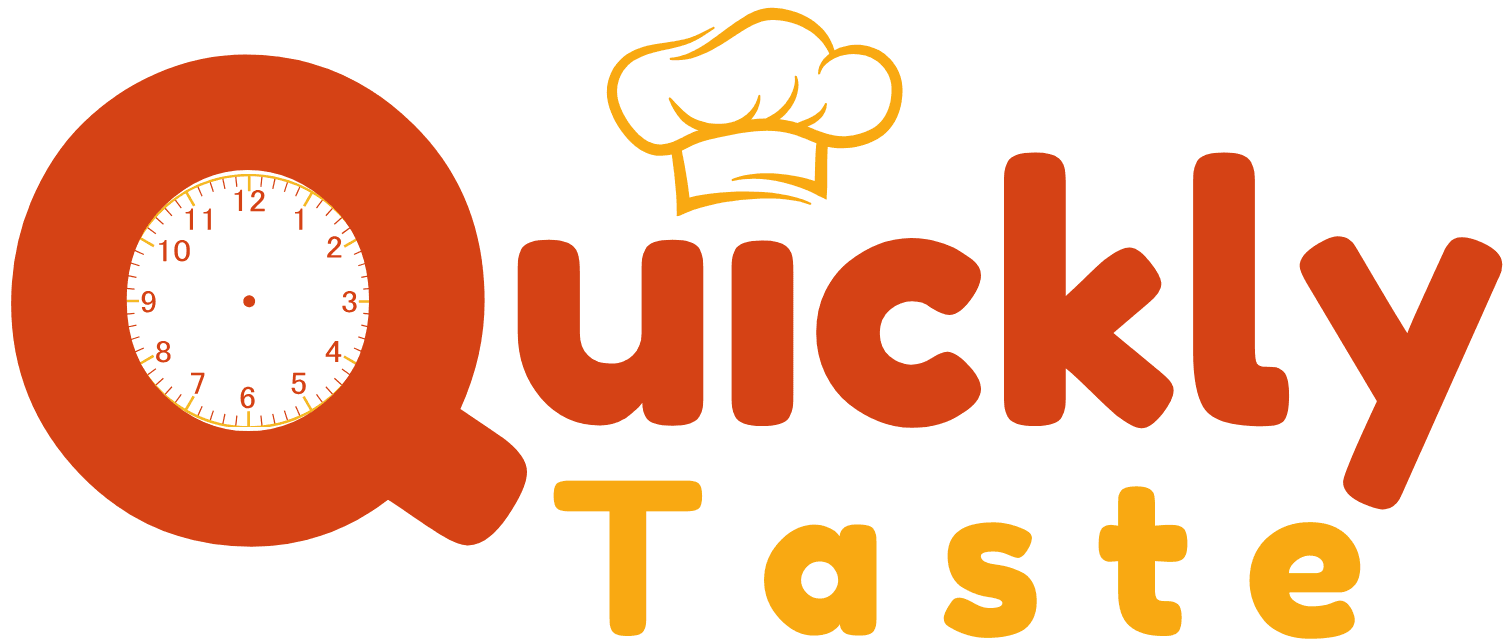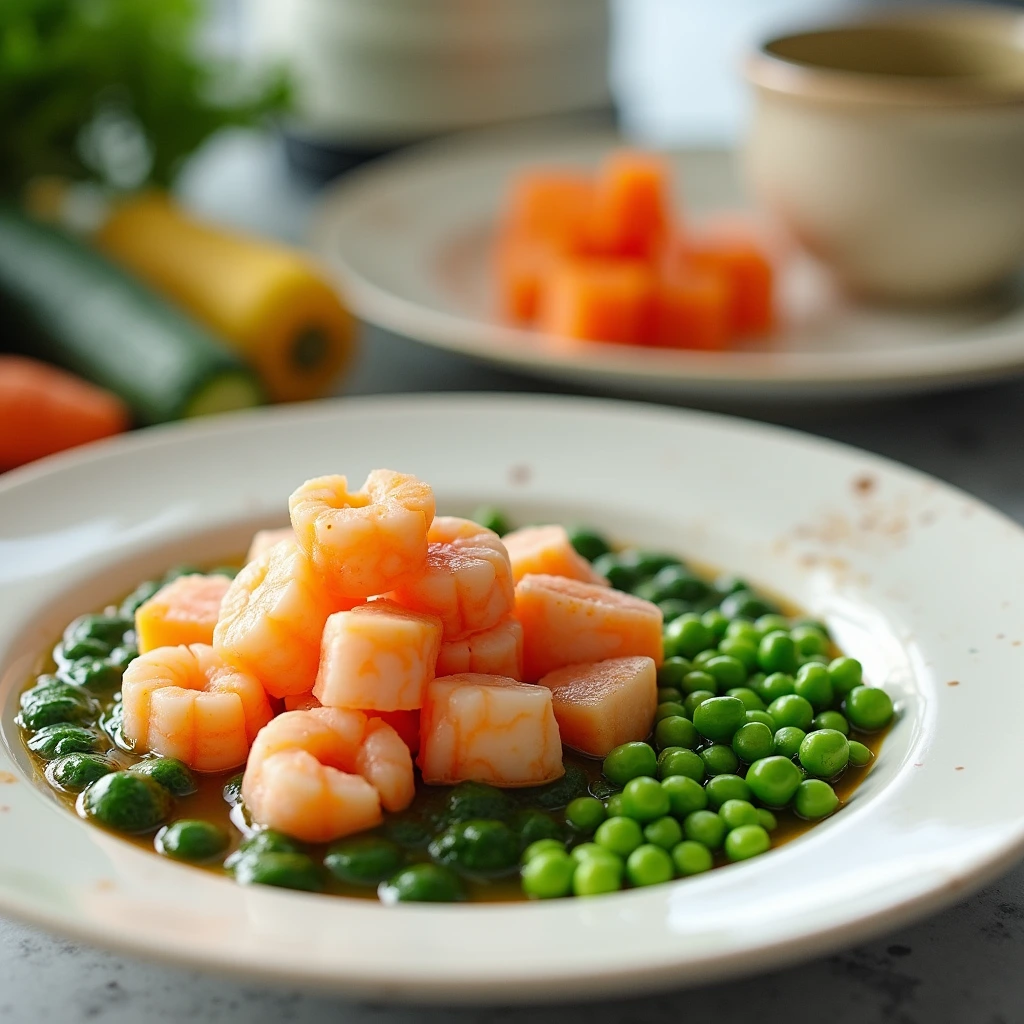Introduction
Providing quality fish food recipe is vital for the health and growth of your aquatic pets. A balanced diet enhances their colors and strengthens their immune systems, helping to prevent stress and diseases.

Importance of Quality Fish Food
High-quality fish food ensures optimal health by delivering essential nutrients. Store-bought options are convenient but often contain fillers and lack vital nutrients fish need to thrive.
Benefits of Homemade Fish Food
Homemade fish food is a cost-effective, nutritious alternative. You can customize ingredients to meet specific dietary needs. It avoids preservatives and improves water quality by reducing waste.
Understanding Fish Nutritional Needs
Fish have diverse dietary needs depending on their species, which can be categorized as omnivorous, carnivorous, or herbivorous. Therefore, understanding these requirements is essential for their health and growth.
Omnivorous fish require a mix of plant and animal-based nutrients. They thrive on a balanced diet of proteins, fats, and carbohydrates. On the other hand, carnivorous fish primarily consume high-protein foods such as insects, crustaceans, or smaller fish. Their diet must include amino acids that are crucial for muscle development. Meanwhile, herbivorous fish rely on plant-based foods like algae and vegetables, requiring fiber and specific vitamins for digestion and overall health.
Additionally, all fish benefit from a diet rich in vitamins (like A, C, and D), minerals (such as calcium and phosphorus), and fatty acids. These nutrients are essential to support immunity, growth, and vibrant coloration. Thus, providing the right nutrients for their specific dietary category ensures better health, reduces stress, and promotes natural behaviors.
In conclusion, whether you choose store-bought food or prepare homemade meals, understanding the specific nutritional needs of your fish is key to creating a thriving aquatic environment.
Ingredients for Homemade Fish Food Recipe
Creating homemade fish food allows you to include high-quality ingredients tailored to your fish’s dietary needs. The key components are proteins, vegetables, vitamins, binders, and optional additives.
Proteins, for instance, are crucial, especially for carnivorous and omnivorous fish. You can include sources like shrimp, fish fillets, earthworms, or boiled eggs, which provide essential amino acids for growth and health. Vegetables, on the other hand, are vital for herbivorous and omnivorous fish. Ingredients such as spinach, peas, zucchini, or algae supply fiber and vitamins that improve digestion.
Moreover, to ensure your fish receive all necessary nutrients, incorporate vitamins and minerals. For example, Vitamin C supports immunity, while calcium promotes strong bones. You can use commercial supplements or natural sources like carrots and kale.
Additionally, binders like unflavored gelatin or agar help hold the ingredients together, making it easier to feed your fish. Furthermore, consider optional additives such as spirulina to enhance coloration or garlic to boost immunity and repel parasites.
In conclusion, by combining these ingredients thoughtfully, you can create a nutritious, cost-effective, and preservative-free diet that supports your fish’s health and well-being.
Tools and Equipment for Fish Food Recipe
Preparing homemade fish food requires a few essential tools and proper handling practices to ensure safety and quality.
First, a blender is crucial for mixing and grinding ingredients into a smooth consistency suitable for your fish. This helps ensure the food is easy for them to eat and digest. Molds or ice cube trays are also important for shaping the mixture into manageable portions, making feeding more convenient. Additionally, a mixing bowl, measuring tools, and a spatula will help in preparing the food efficiently.
Safe handling practices are equally important. Always use fresh, high-quality ingredients and thoroughly wash your tools and workspace before and after use. This reduces the risk of contamination. If you’re using raw proteins like fish or shrimp, ensure they are properly cleaned and, if needed, cooked lightly to remove harmful bacteria. When blending, add a binder like gelatin or agar to create a firm texture.
After preparation, store the food in airtight containers or freezer bags and freeze it to maintain freshness. By using the right tools and following safe practices, you can produce healthy, homemade fish food with ease.
Step-by-Step Recipe Guide for Fish Food Recipe
Creating homemade fish food is simple and rewarding. Follow these steps to ensure a nutritious and safe meal for your fish.
1. Prepare the Base:
Start by selecting your primary ingredients based on your fish’s dietary needs. For example, use shrimp or fish fillets for protein, spinach or peas for vegetables, and a vitamin supplement if needed. Chop the ingredients into small pieces for easy blending.
2. Mix the Ingredients:
Place all prepared ingredients into a blender. Add a binder such as unflavored gelatin or agar to help the mixture hold its shape. Blend until you achieve a smooth paste. Adjust the consistency by adding a small amount of water if necessary.
3. Cooking Methods:
For firm fish food, heat the mixture gently to activate the binder. Then, pour it into molds or spread it on a tray. Let it cool and set in the refrigerator or freezer. Alternatively, leave it uncooked for a softer texture, depending on your fish’s preferences.
4. Storing Tips:
Cut the food into bite-sized portions if needed. Store in airtight containers or freezer bags, and keep frozen. Thaw only the amount you need to avoid waste.
By following this guide, you can provide your fish with a fresh, tailored diet!
Customizing Recipes for Fish Types
Different fish species have unique dietary needs, so customizing homemade recipes is essential for their health and growth.
Goldfish are omnivorous and thrive on a mix of plant-based and protein-rich foods. Include peas, spinach, and small amounts of cooked shrimp or boiled egg. Avoid excessive protein, as goldfish can struggle to digest it.
Bettas, being carnivorous, require a high-protein diet. Use ingredients like brine shrimp, daphnia, or fish fillets. Adding a small amount of spirulina can boost their color without overloading on plant matter.
Cichlids vary widely in dietary needs based on their type. Herbivorous cichlids benefit from algae, zucchini, and spinach, while omnivorous varieties need a balance of protein (like shrimp) and vegetables. For carnivorous cichlids, focus on high-protein sources such as fish fillets or earthworms.
Other species, such as catfish or tetras, research their specific dietary requirements. For instance, catfish enjoy sinking foods made with protein and fiber, while tetras need a balance of small proteins and plant-based ingredients.
Tailoring recipes to match your fish’s natural diet ensures better digestion, improved health, and vibrant colors. Adjust proportions carefully to meet their specific needs!
Common Mistakes and Tips
Feeding your fish homemade food can be rewarding, but avoiding common mistakes is essential for their health and the aquarium’s balance.
1. Overfeeding:
Overfeeding is a common mistake that can harm fish and degrade water quality. Always feed small portions that your fish can consume within a few minutes. Uneaten food should be removed promptly to prevent pollution.
2. Choosing the Wrong Ingredients:
Not all ingredients are suitable for fish. Avoid high-fat or oily foods like red meat, as these can cause digestive issues and pollute the water. Additionally, stay clear of seasoning, salt, or sugar. Always use fresh, high-quality ingredients and research your fish’s dietary needs.
3. Ignoring Specific Needs:
Feeding all fish the same food can lead to nutrient deficiencies. Customize recipes to match the species’ requirements, ensuring a balance of proteins, vegetables, and essential nutrients.
Tips for Success:
Use a binder like gelatin to create firm food that doesn’t disintegrate in water. Store prepared food in small, single-use portions to maintain freshness. Lastly, observe your fish after feeding to ensure they accept and digest the food well.
By avoiding these mistakes and following these tips, you can ensure your fish thrive on homemade food.
Storing and Shelf Life of Fish Food
Proper storage is essential to maintain the quality and safety of homemade fish food. After preparation, divide the food into small, single-use portions to avoid waste. Store these portions in airtight containers or freezer bags to prevent freezer burn and preserve freshness. Always label the containers with the preparation date.
Homemade fish food should be stored in the freezer, where it can last up to 2-3 months. For short-term use, it can be kept in the refrigerator for 3-5 days. However, refrigeration is only recommended if you plan to use it quickly.
To avoid contamination, handle all ingredients and tools with clean hands. Ensure your workspace and utensils are sanitized before preparation. When thawing frozen food, use only the portion needed and never refreeze leftovers.
Be alert to signs of spoilage, such as unpleasant odors, discoloration, or mold. Spoiled fish food can harm your fish and pollute the tank. If you notice any of these signs, discard the food immediately.
By following proper storage practices and monitoring the food’s condition, you can ensure your fish enjoy fresh, nutritious meals while minimizing waste.
Cost Comparison: Homemade vs. Store-Bought
Homemade fish food can be a cost-effective alternative to store-bought options, depending on the ingredients and preparation methods.
Store-bought fish food is convenient and widely available, but premium brands can be expensive, especially for specialized diets. Additionally, many commercial options include fillers, which reduce nutritional value and may result in higher feeding quantities to meet your fish’s needs.
Homemade fish food, on the other hand, allows you to use fresh, high-quality ingredients tailored to your fish’s specific dietary requirements. Ingredients like shrimp, vegetables, and gelatin are affordable and often available in bulk. Preparing a large batch at once and freezing it reduces long-term costs. For example, the cost of making fish food at home can be significantly lower per serving compared to buying small containers of high-end commercial food.
However, initial costs for equipment like a blender and molds should be considered. While DIY fish food requires time and effort, the long-term savings and improved nutritional quality make it an appealing option for many aquarists.
In conclusion, while store-bought food is convenient, homemade options are more customizable, often healthier, and more cost-effective in the long run.
FAQs
What is the best homemade food for fish?
The best homemade food for fish depends on their species and dietary needs. For omnivorous fish, a mix of protein (e.g., shrimp or boiled egg) and vegetables (e.g., spinach or peas) works well. Carnivorous fish thrive on high-protein options like fish fillets or brine shrimp, while herbivorous fish benefit from plant-based ingredients such as algae and zucchini.
How do you make homemade fish feed?
To make homemade fish feed:
- Select ingredients based on your fish’s needs (e.g., protein, vegetables, and vitamins).
- Blend the ingredients with a binder like gelatin or agar for texture.
- Pour the mixture into molds or spread it on a tray and let it set in the fridge or freezer.
- Cut into bite-sized portions and store in airtight containers.
What are the best ingredients for fish food?
The best ingredients include:
- Proteins: Shrimp, fish fillets, earthworms, or boiled eggs.
- Vegetables: Spinach, peas, zucchini, and algae.
- Vitamins and Minerals: Carrots, kale, or fish supplements.
Optional additives like spirulina can enhance color and health.
How to make live food for fish?
To make live food:
- Cultivate live organisms like brine shrimp, daphnia, or micro worms at home.
- Feed them suitable nutrients to keep them healthy.
- Harvest and rinse before feeding to your fish.
This method provides a natural and protein-rich diet for your fish.
Helpful Resources
For more information and detailed guides on homemade fish food and aquarium care, here are some reliable external resources:
- Aquarium Co-Op offers a wealth of knowledge on fish care, including DIY fish food recipes and feeding tips.
- The Spruce Pets provides practical advice on creating a balanced diet for different fish species and maintaining water quality.
- Practical Fishkeeping features articles on fish nutrition, feeding practices, and expert insights into aquarium management.
- Fishkeeping World is an excellent source for understanding the specific dietary needs of various fish species, along with step-by-step guides for homemade food.
- For those interested in cultivating live food, Aquatic Arts has tutorials on setting up brine shrimp and daphnia cultures.
These resources can help expand your knowledge and refine your approach to fish care. Always ensure you rely on reputable sources to provide your fish with a safe and nutritious diet. Regular updates from these websites will also keep you informed about the latest trends in fishkeeping and aquarium nutrition.
You can discover more pie recipes on our website:
- Choco Pie
- Passover Potato Pie
- Pickle Pie Pizza
- Pecan Pie Cheesecake
- Milk Bar Pumpkin Pie
- Pecan Pie Cheesecake
- Pumpkin Pie Recipe Condensed Milk
Conclusion
Making homemade fish food is a rewarding way to ensure your fish receive a healthy, balanced diet tailored to their specific needs. By using fresh, high-quality ingredients, you can provide better nutrition, improve their overall health, and enhance their natural colors. Additionally, homemade food minimizes unnecessary fillers and preservatives often found in store-bought options, making it a safer choice for your aquatic pets.
Beyond health benefits, DIY fish food can also save money over time, especially when preparing large batches and storing them properly. It allows you to customize recipes for different fish species, from herbivorous goldfish to carnivorous bettas and cichlids, ensuring every fish gets the nutrients they require.
While it may seem intimidating at first, preparing fish food at home is simple and cost-effective with the right tools, ingredients, and safe handling practices. Experimenting with different recipes can be an enjoyable and educational experience for fishkeepers of all levels.
In summary, homemade fish food is a great way to promote your fish’s health, maintain water quality, and enjoy the process of caring for your aquarium. Give it a try—you might be surprised at how much your fish thrive on a personalized diet!

